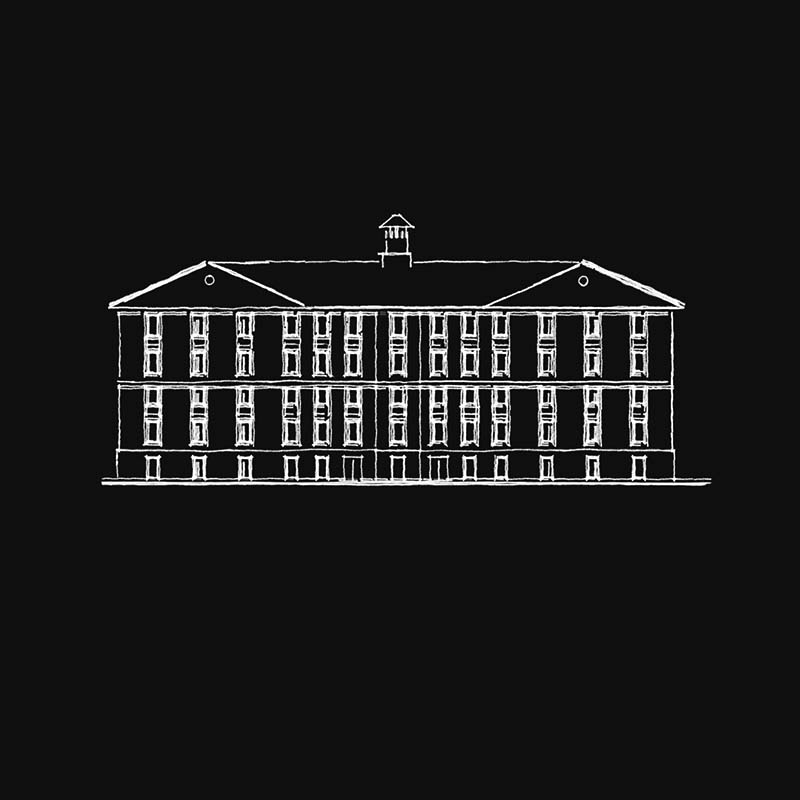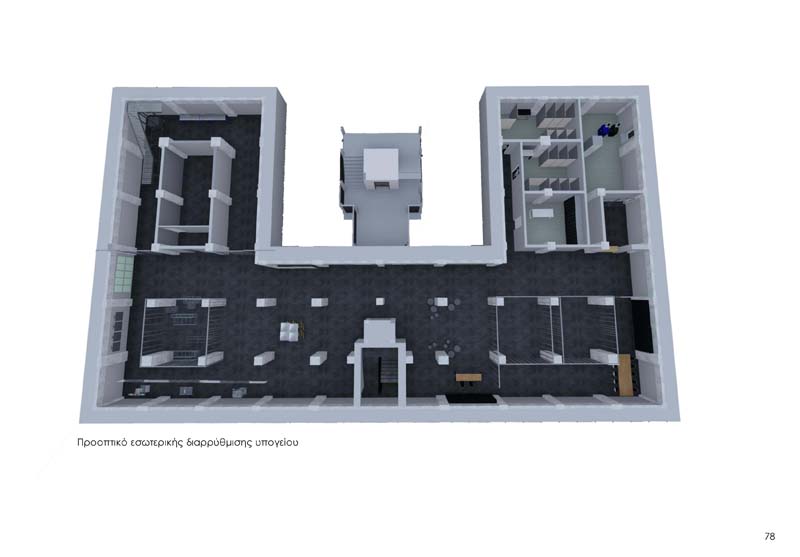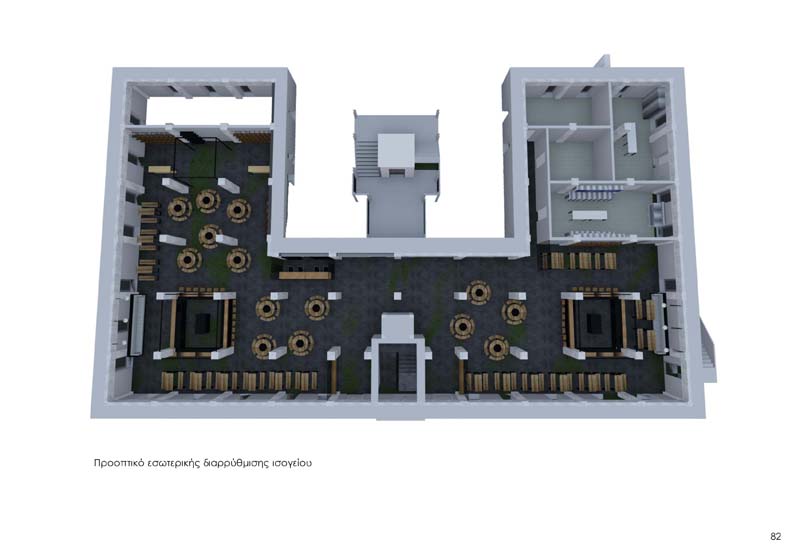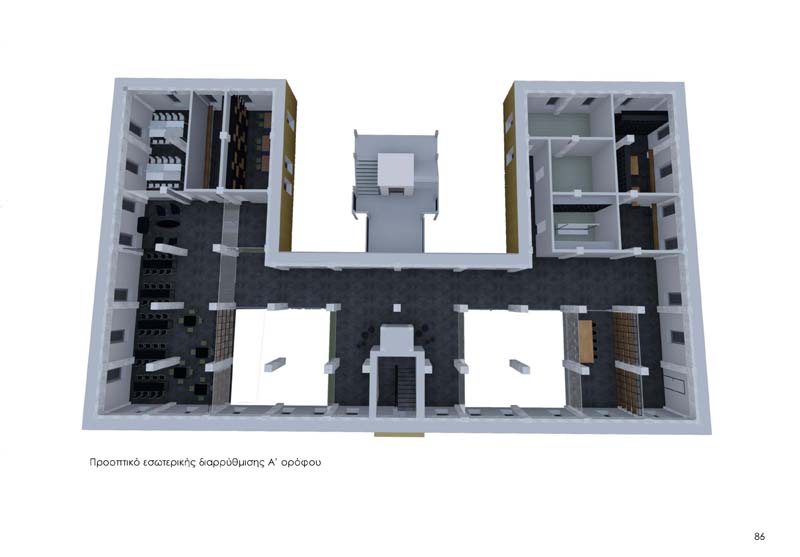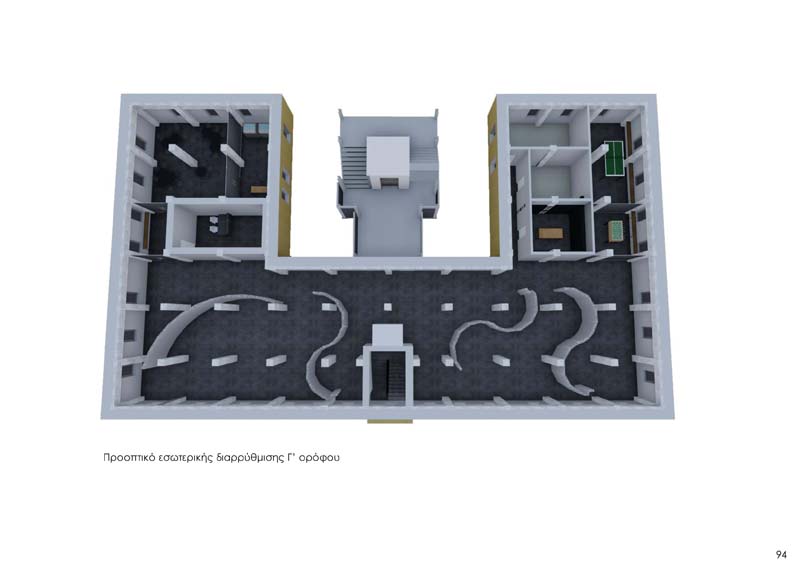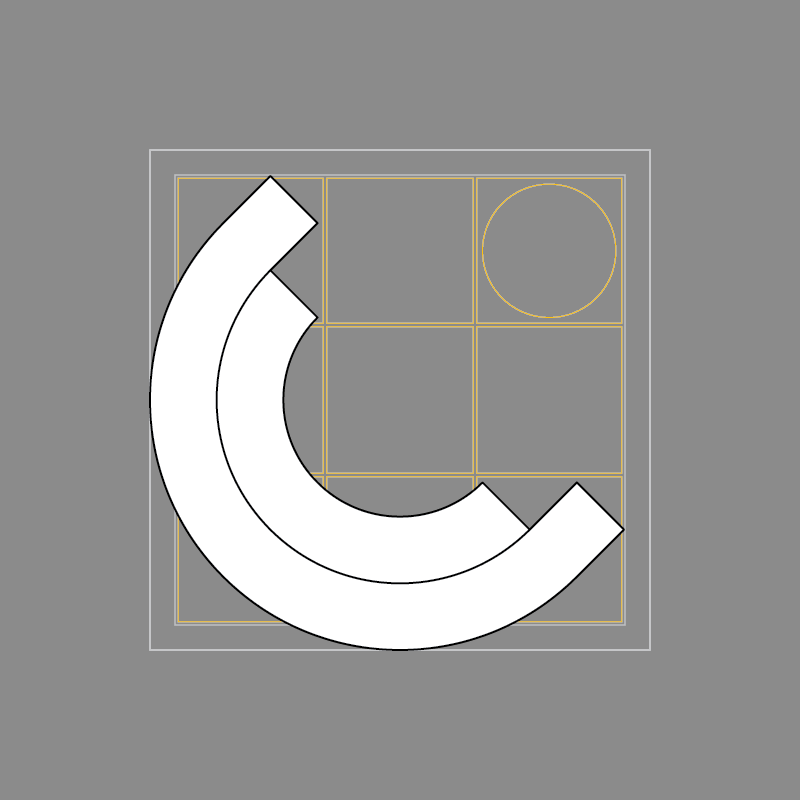

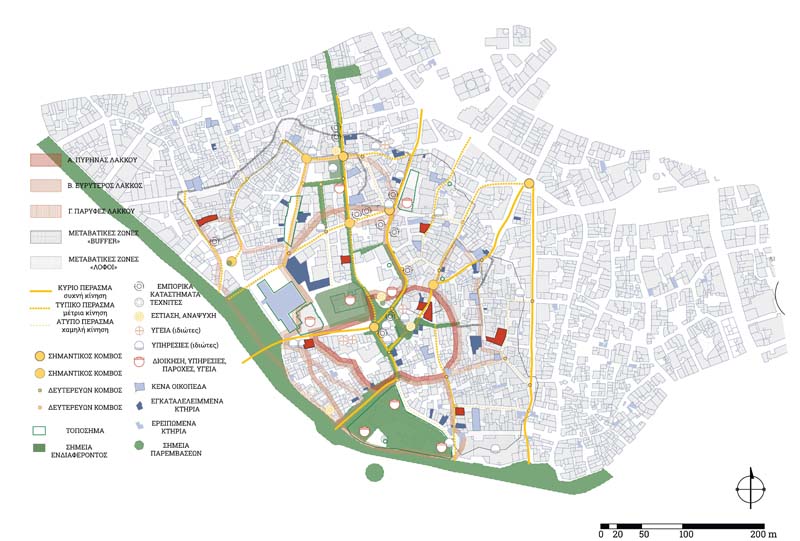

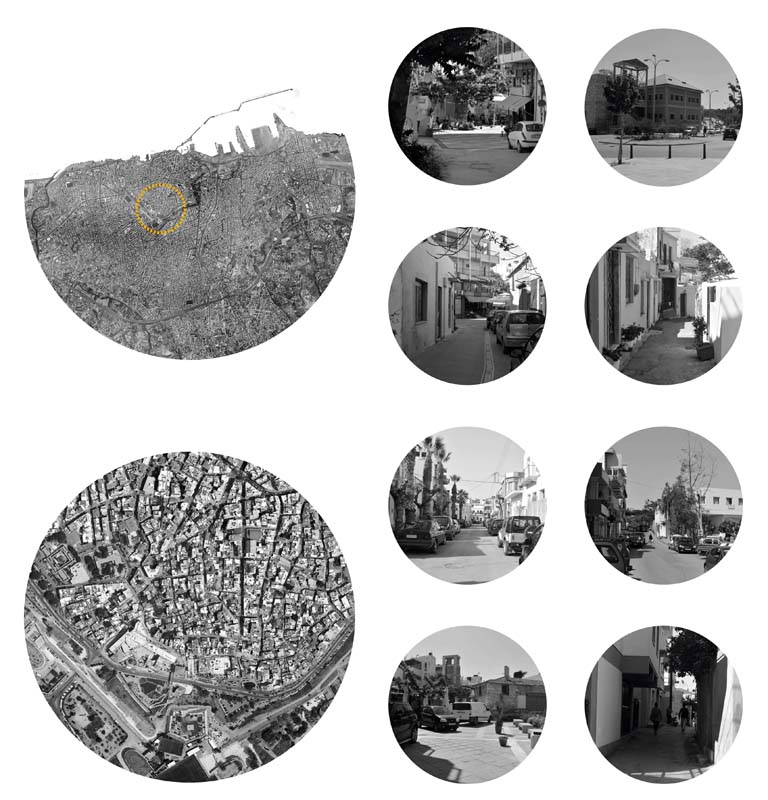

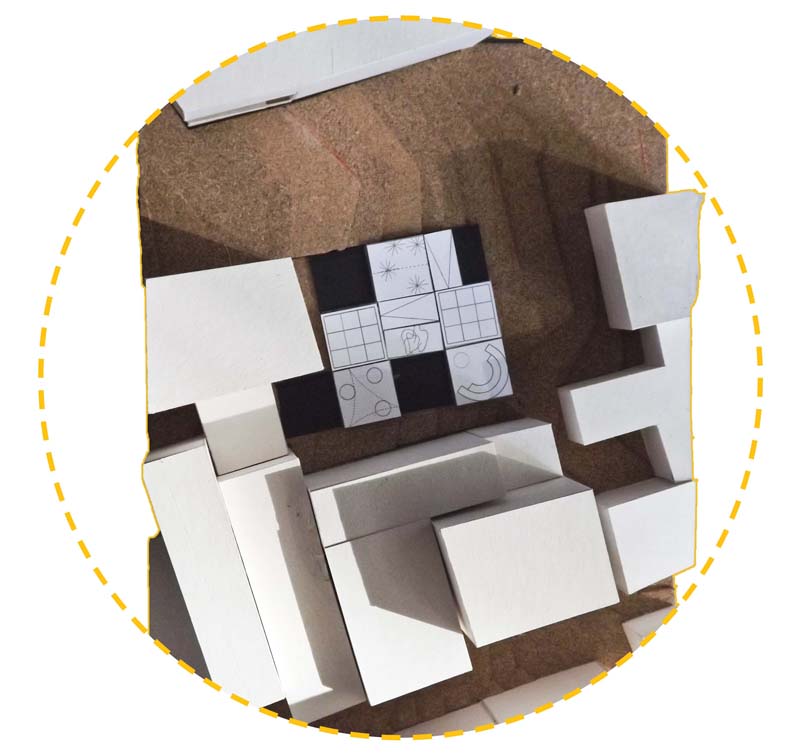

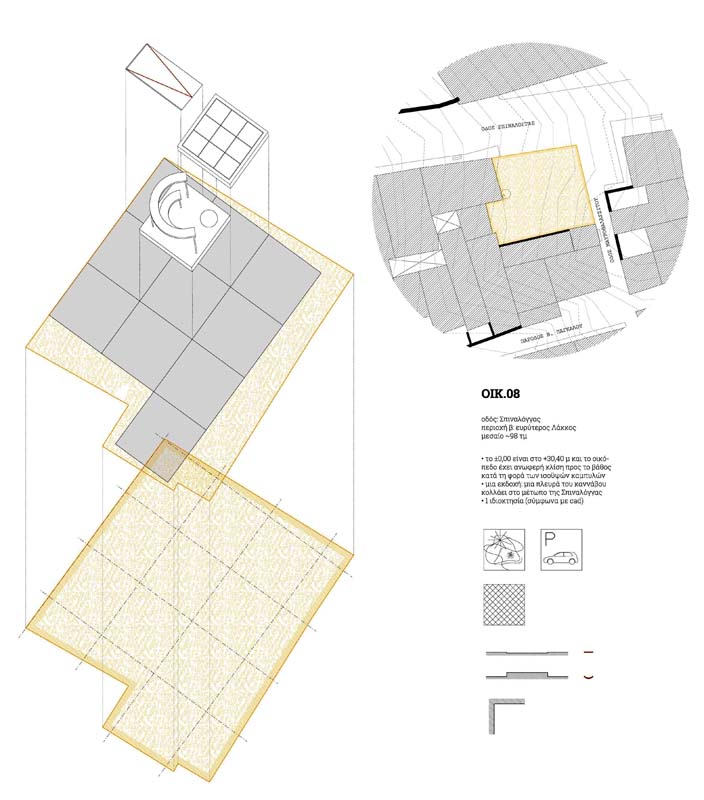

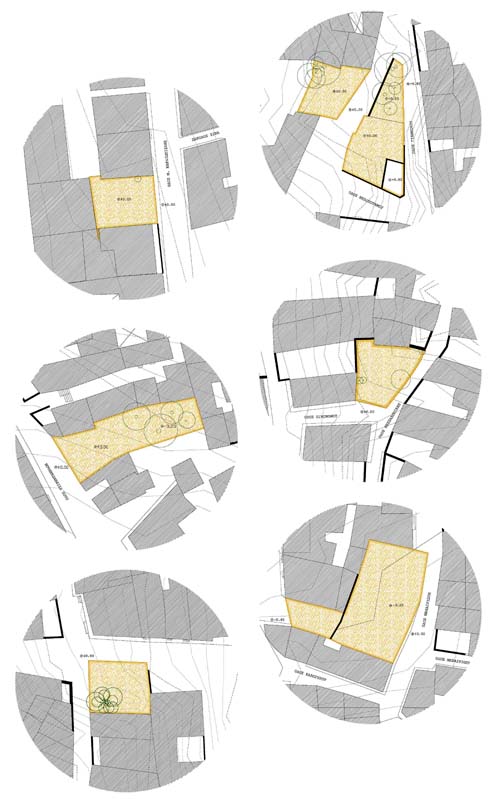

The present thesis dealt with one of Heraklion’s city centre neighborhoods, Lakkos. For many decades the region remained under a regime of immobility, forgotten by its citizens, in the shadow of the city centre. The latter mutated rapidly, whereas Lakkos remained branded and only with the remembrance of its foul past activities. It is one of the Old City sections in a state of dereliction and marginalization, without any concern or clear intents about the future.
However, this situation seemed to change, about 15 years ago, when the neighborhood was chosen as the region where the new Cultural centre of the city, was going to be built. The simultaneous, search for a spatial and planning policy, the upgrading and taming efforts of the close by streets, city blocks and people that Lakkos neighborhood consistent of in its current phase, evoked reactions and concerns.
With the those conflicts from the past decade as a starting point, begins the study and analysis of the neighborhood while trying to make clear and comprehensible all those factors that created, influence and shape the image of Lakkos in the present day. The fragmented population, hardly forming a community; the efforts of various teams and groups to make visible and known the past and present of the region; actions and activities, mostly cultural, in order to attract the residents of Heraklion; small businesses and some of the first people to return or settling around Lakkos square; but, most of the older dwellers are already gone.
Between the lack of planning policy and official resolution tools, the intention is to create, or to design a procedure, which allows creative conflicts, with space in their core. More specifically, public –and ideally common- space, that the new and older residents are called to put under consultation and negotiation, in an attempt the creation of a common place, as well as a common good, deriving from and molding the community.
Supervisor: Lykourioti Iris
Reference Number: 709
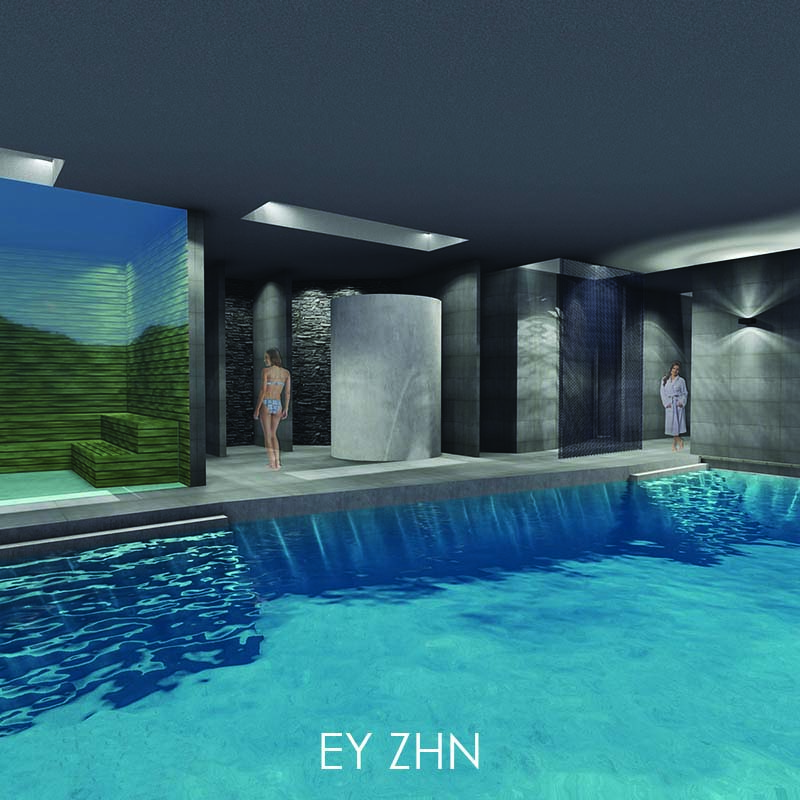











This project concerns the design of a small hotel unit, which will also offers services not only to those who use the accommodation, but also to the visitors who come to use the facilities of the hydrotherapy, or just enjoy the natural healing spring and the nature. From the restrictions of the ground came up the basic synthetic idea, meaning the orientation of the plot, the mountain slope, the view, the natural elements and the use of the building. Two basic semi-udercover volumes have been designed, one to accommodate the hotel unit and the second one to accommodate the hydrotherapy, according the slope of the ground. The terrace of the hydrotherapy building operates as courtyard for the eating establishments of the hotel and has the only pool with no thermal water. The link of the complex with the source of the thermal water in the gorge is done with the design of a path in a way that there is no significant intervention in the natural environment. Natural materials have been used. There are also designed some facilities in harmony with nature. These facilities are used for relaxation and observation of the natural environment.
The building that accommodates the hydrotherapy is located on the level of the reception. From this point the visitors may head for the hotel or the hydrotherapy from two separate paths. In the hydrotherapy there are three private pools with thermal water, and a big common one, Jacuzzi, shower-baths, sauna and hamam. There are also designed a room for aromatherapy and a room for massage, and a gym as well. The volume of the hotel has been separated in two buildings. The big and basic building accommodates on the ground floor the eating establishments and the auxiliary spaces, and on the floor there are the rooms with their planted yards. The small second volume accommodate the suites of the hotel.
Supervisors: Philippitzis Dimitris, Manolidis Kostas
Reference Number: 717
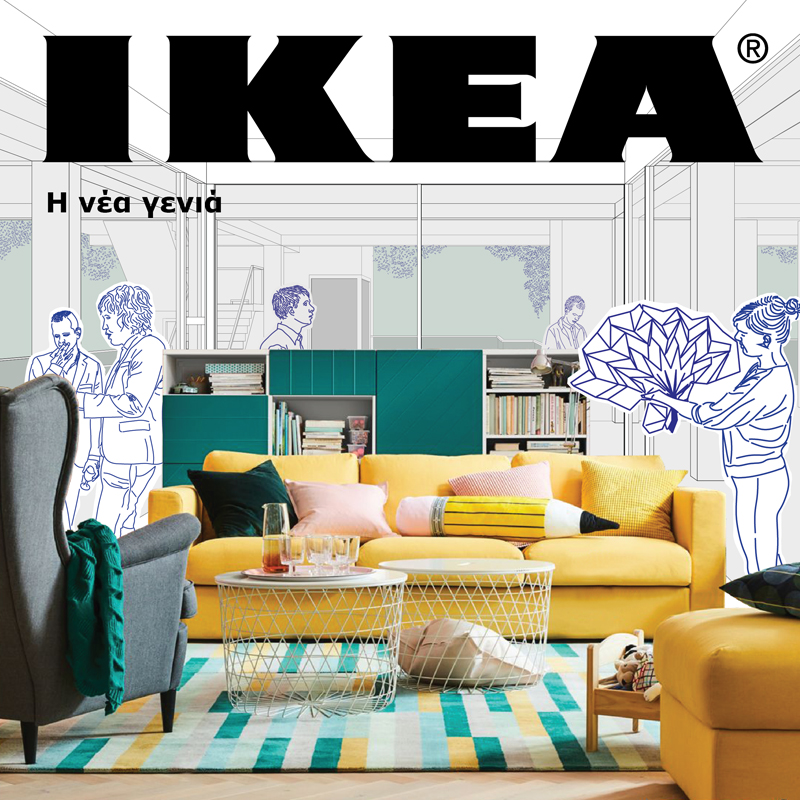

Education is the real weapon of the new generation.
Books and classrooms were never enough to fuel a profound education. Discussions, companionship, open thinking, debating… are the essences that create big ideas. The new student dorm IKEA built aims to bring students a step closer to ‘real’ education by suppling millennials with an vast space and open mind. Far from the typical classrooms and the generic dorm rooms, a new college student hub is created, infused with all the corks and habits of students today. Guided by their love for creation and making memories that last forever, millennials travel and rent a different bed, and we dare say a different life every night, while sharing their every moment with the rest of the world. The fruit of IKEA’s efforts is the new campus ‘IKEA, The new generation’, where dorms, rentable workshop spaces and a ‘vertical’ hotel of temporary residency are located, as well as all the talented that will flourish within the IKEA family.
What makes IKEA designs so affordable and at the same time so unique? By establishing in every corner of the world, those blue and yellow mega-buildings, synonym with its name, IKEA has irrevocably invaded our lives. By introducing us to Sweden as a whole, promoting the hard working and totally selfless designers and many other tricks, IKEA can [or won’t] never let us visit their stores for ‘just a few minutes’. All these practices were studied and analyzed to result in a non-official but painfully honest “IKEA Manifest”.
Supervisor: Mitroulias Giorgos
Reference Number: 659












The settlement of Ano Kerasia is located on the western slopes of northern Pelion and was abandoned by its inhabitants when it was completely destroyed by German occupation forces in 1944. Apart from minimal interventions, most of the buildings of the settlement are kept in ruins. From 2015 the settlement of Ano Kerassia is characterized as a historical site and is protected by Ministerial Decree of the Ministry of Culture and Sports. In the context of the diploma thesis, a selected number of ruins is treated with a common vocabulary regarding the composition of volumes and the use of materials. The interventions in the settlement acquire a point and a linear character, they trace the historical memory of the place and penetrate into the natural landscape.In five different ruins, representative of the different conservation statuses encountered in the settlement, solid concrete volumes that maintain the initial geometry imposed by the building footprint and end up on sloping roof surfaces. Thus, the four new shells become hikers' shelters and one keeps the historical archives of Ano Kerasia.A new path is designed to connect four ruins that are significant to the history of the settlement, ignoring for the most part the existing paths. “Koukeiko”, the English Mission, the Commissariat, and the School were landmarks and reference points during the Resistance and the years before German occupation.As in the case of shelters, the historic path is made up of solid concrete blocks flanking surfaces with verticallyplaced stones. Interventions in the four landmarks are done with the materials selected for the rest of the ruins, but in a weaker way since it is intended to stop the wear and to remind.
Supervisor: Manolidis Kostas
Reference Number: 716












Visually impaired people are a vulnerable social group and a very large proportion of the population.They face many difficulties in their daily routine, so their choices are limited. They have different needs, which influence their lives. For that reason, space planning provides functional and practical solutions and at the same time, it expresses the personality of the visually impaired people.
This diploma thesis has as its object the design of a center for visually impaired people in the center of Volos. The results of the conducted survey formed the main building program. The concept of integration into the society where the education system is based has shaped the structure of the building. Initially, the local blind society of Volos and then the Center for the Education and Rehabilitation of Blinds in Athens was visited for research purposes. The administration was interviewed and the members, mainly children, completed questionnaires during the visits. Their opinions and answers shaped the building program and building structure.
A corridor made by ramps and stairs surrounds the main areas of the building where the activities take place. The purpose of creating this corridor is to design the building as a single unit rather than a set of smaller units. Since the activities for the members interconnect at a conceptual level, it is important to have direct access between the spaces where these activities take place. The corridor provides visual contact within the building areas while it allows the user to explore the building. In this way, the building structure promotes a creative and learning environment. This design is framed by the concept of integration where the education system is based. The open spaces of the building along with the corridor transform the building to a communal center and it respond to the needs of people with visual disabilities without being isolated them from the urban environment and furthermore by the society. The main objective of the proposal is to provide a site for the visually impaired people and at the same time to create spaces for everyone and connected with the city's activities.
Supervisor: Gavrilou Evelyn
Reference Number: 712
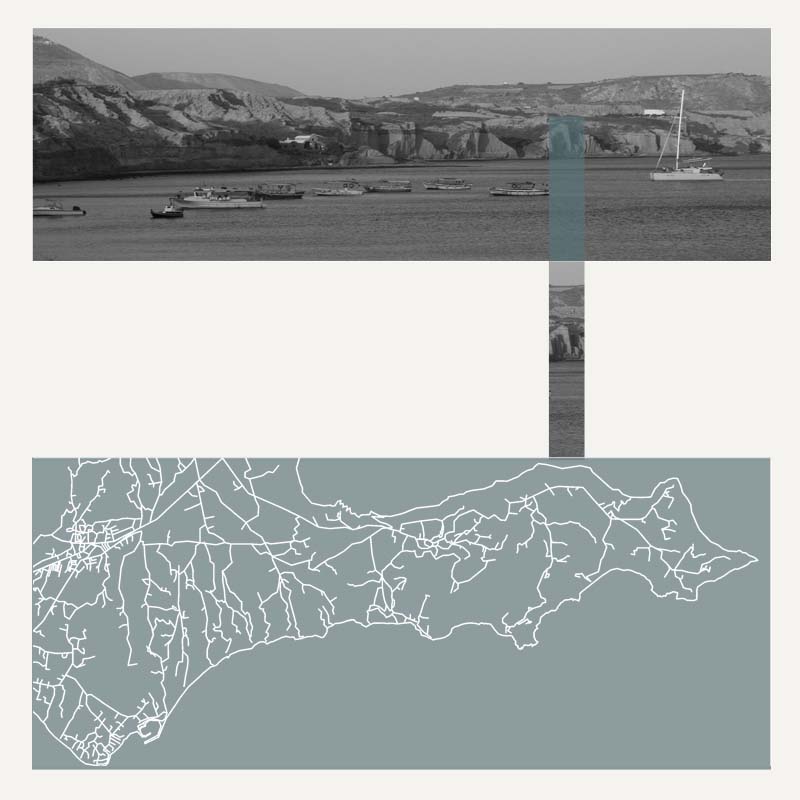

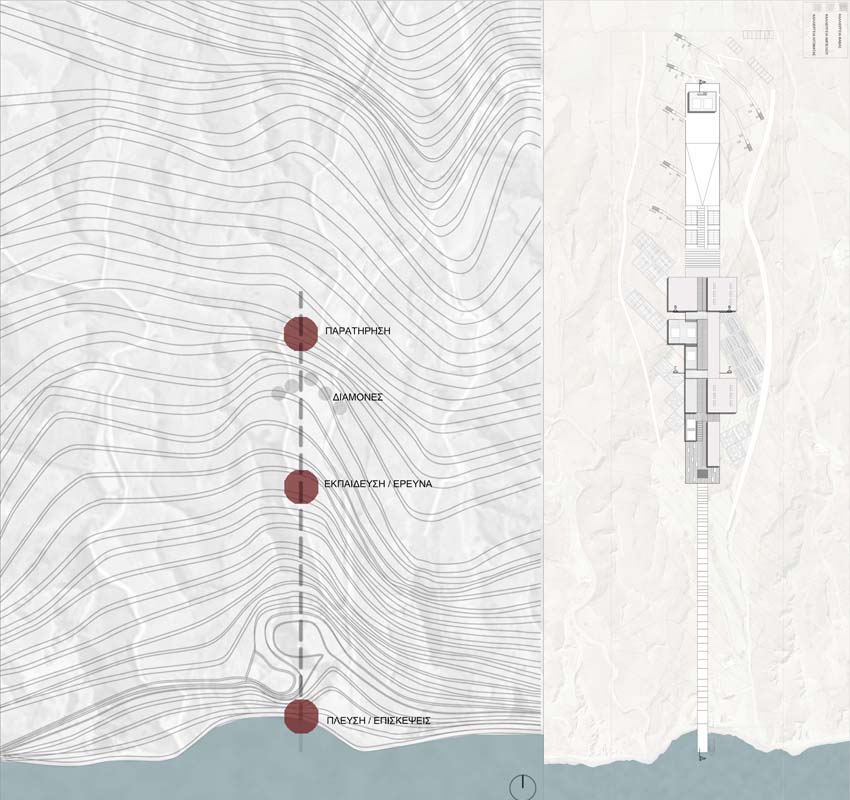

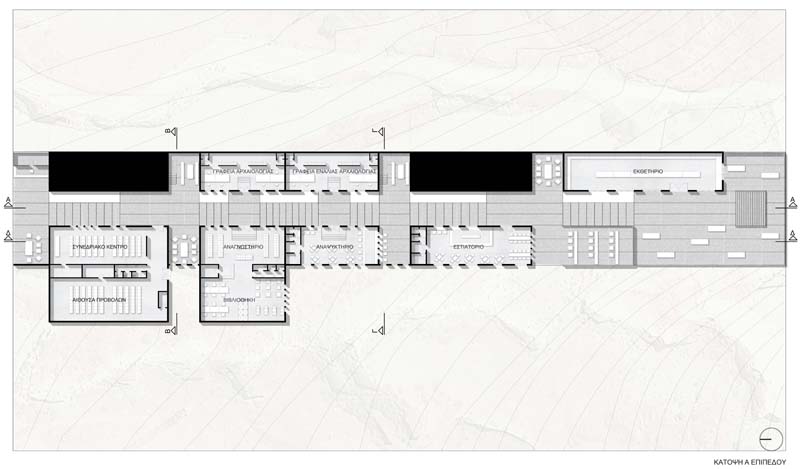

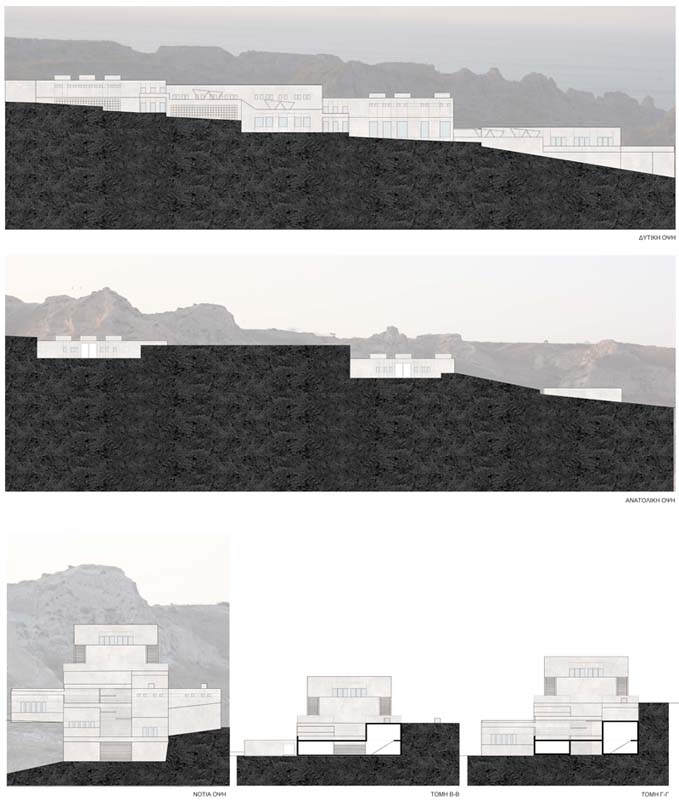

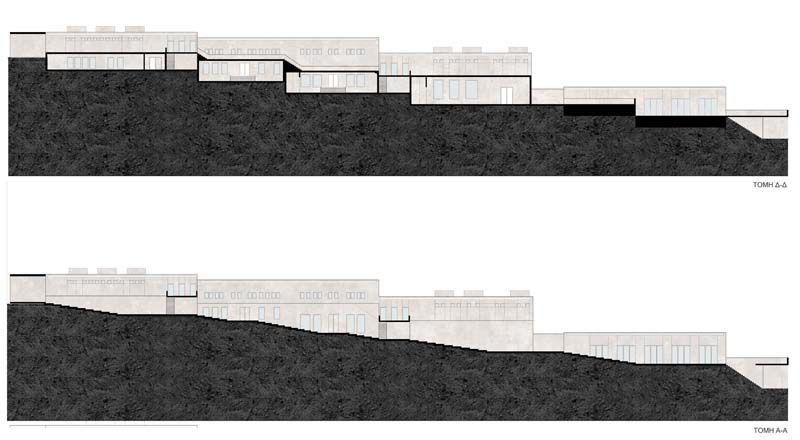

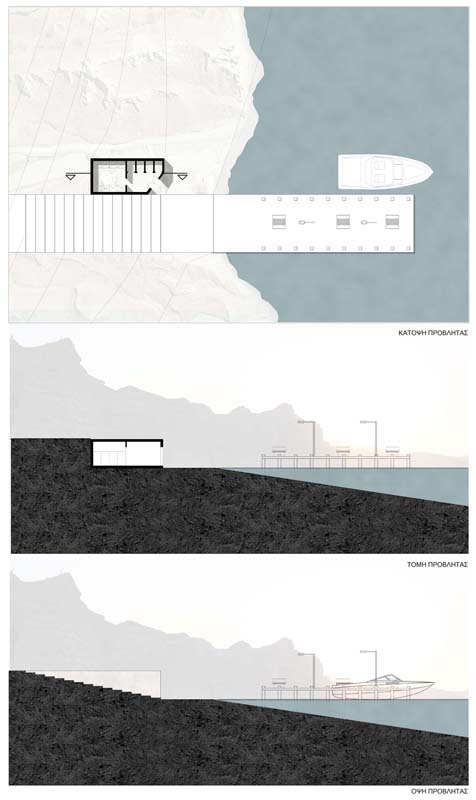

Greece is a country of particular archaeological interest. In my research I focused on the island of Thira (Santorini) and more specifically in the area of Akrotiri. The pirates prove that the Akrotiri area starts about the middle of the third millennium. The initial Cycladic civilization is developed in a significant settlement, which has a significant impact on the Cretan civilization. In the Neo-palatial period, which is a time of great prosperity for the Minoan civilization, the settlement presents particular development, based on trade and shipping. Around 1500 BC the city of Akrotiri finds a sudden death and a tragic end due to the volcano. The volcano cone precipitates, disappearing an area of 83 sq. Km. In its place, the water of the sea penetrates, forming the caldera surrounding the islands of Thira, Thirasia and Aspronissi, the remains of the damaged Strongyli is Island. In the center of the caldera are the islands of Old and New Kameni products of the submarine activity of the volcano.
For my part, I want to design a center of research and apprenticeship for this area. My goal is to protect all the findings and to continue the research diligently and with care. An organized group of scientists, researchers, conservatives is considered necessary for research. The members will also be guaranteed accommodation. There is also the possibility of hosting other student-related research groups related to the subject.
Due to the intense archaeological interest and the large amount of finds, it is advisable to have organized research and special attention. Must not become disasters but instead emerging the findings and the must become a renowned archaeological site. This buried state, should come back to light with methodological precision and patience.
Supervisor: Stylidis Iordanis
Reference Number: 677
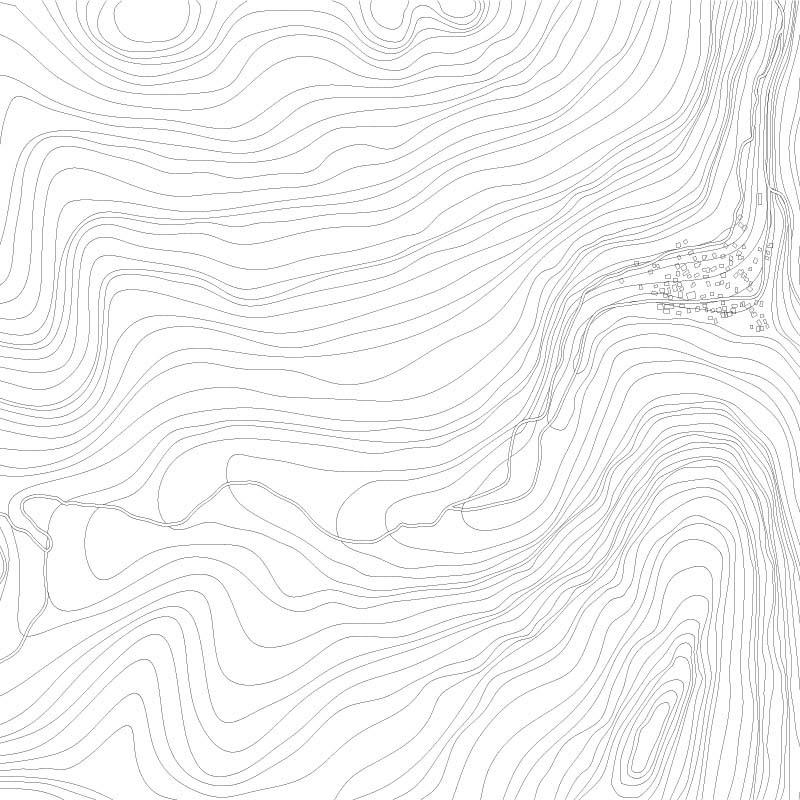

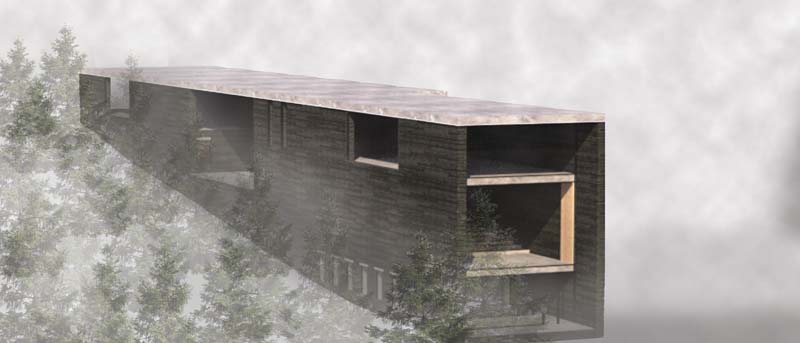

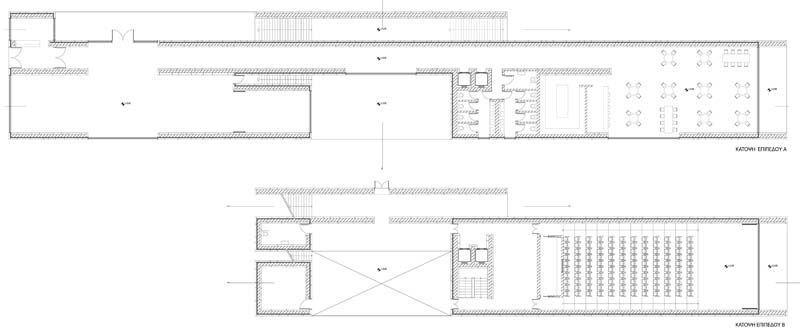

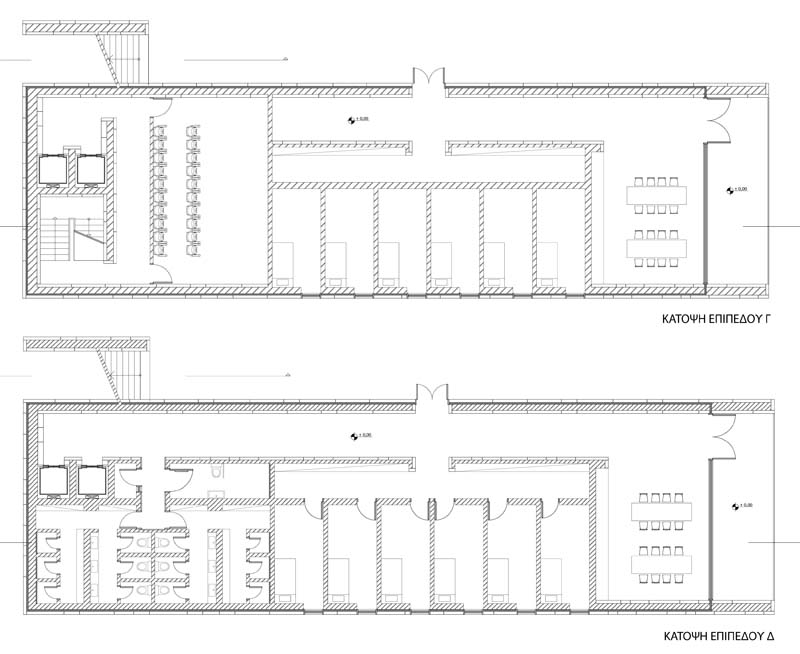



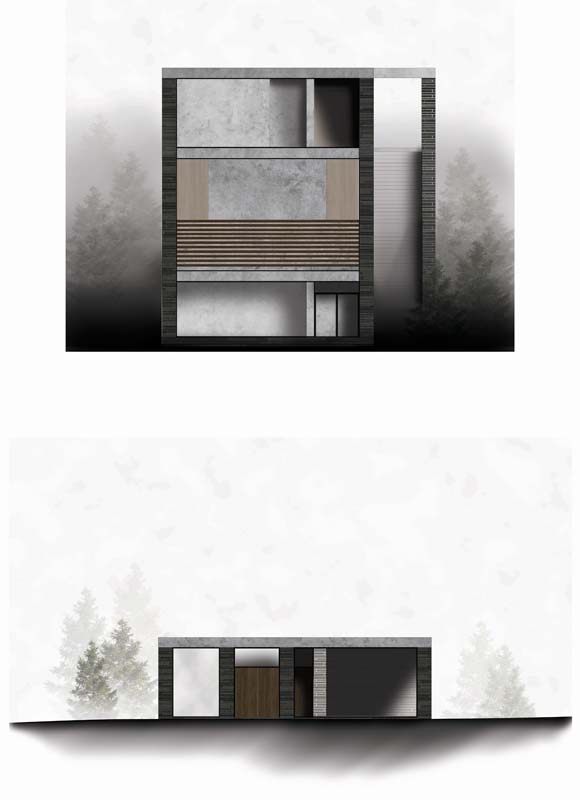

The subject of this diploma thesis concerns the creation of an Environmental Center in the area of Aspropotamos, Trikala, near the mountain village of Haliki.
It is a center of study and hospitality aimed at people who seek contact with nature and are interested in participating in relevant workshops, lectures and excursions. The building is divided into four levels, the first one with a small reception area for the best service of the visitors, a multipurpose space and the cafeteria. The second level hosts the amphitheater and leads to the third level, in a projection room through a staircase. On the fourth floor are the 6 guest rooms with independent hygienic and kitchen facilities. The move to the building is through staircases and elevators that run all four levels, while the sanitary areas have been preceded by a study for disabled persons. Characteristic of the building is the possibility of << escape >> to and from it, creating both internal and external routes that connect different spaces. At the same time, through the corrugations that create the openings of the building, continuous contact with the external environment is achieved, which is intensified by the completion of the building in a long opening, thus integrating its different levels.
Regarding all the actions that the Aspropotamos Environment Center hosts, the visitor can participate in conferences and lectures on the subject of the environment and its protection, or to introduce more specific issues related to nature such as the study of local herbs and their impact on the human body, nutrition issues involving the local community as well as the exploration of the natural wealth that surrounds the building according to the capacity of the group. The actions also concern educational institutions such as schools and more specifically groups of students who attend the Environmental Education course and wish to enrich their knowledge both theoretically and practically.
The ultimate goal is to create a core within the vastness of nature, informing and sensitizing man.
Supervisor: Kanarelis Theoklis
Reference Number: 697


